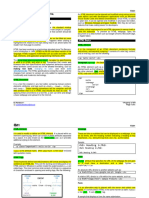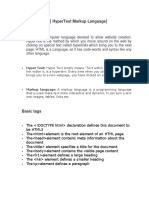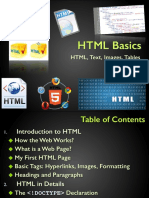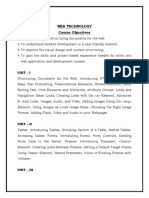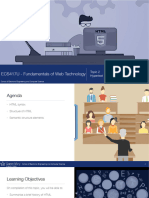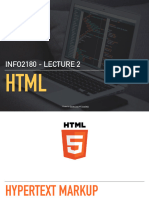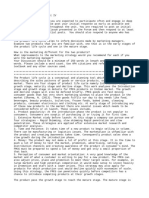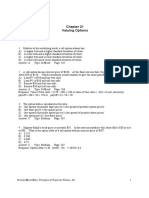0% found this document useful (0 votes)
11 views12 pagesSession 2 HTML Basics Structure and Elements
This document outlines the basics of HTML structure and elements, focusing on the creation of a well-structured HTML page. Key topics include the basic skeleton of an HTML document, the use of headings, paragraphs, links, images, and attributes. The session also emphasizes best practices for HTML coding and includes a hands-on activity for building a simple webpage.
Uploaded by
thihaaung.tt1660Copyright
© © All Rights Reserved
We take content rights seriously. If you suspect this is your content, claim it here.
Available Formats
Download as PDF, TXT or read online on Scribd
0% found this document useful (0 votes)
11 views12 pagesSession 2 HTML Basics Structure and Elements
This document outlines the basics of HTML structure and elements, focusing on the creation of a well-structured HTML page. Key topics include the basic skeleton of an HTML document, the use of headings, paragraphs, links, images, and attributes. The session also emphasizes best practices for HTML coding and includes a hands-on activity for building a simple webpage.
Uploaded by
thihaaung.tt1660Copyright
© © All Rights Reserved
We take content rights seriously. If you suspect this is your content, claim it here.
Available Formats
Download as PDF, TXT or read online on Scribd
/ 12




